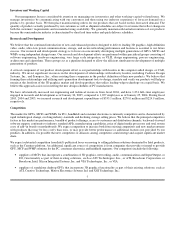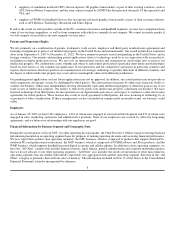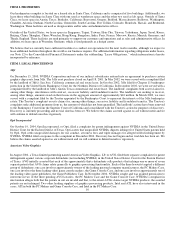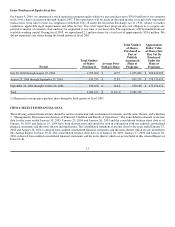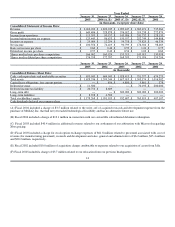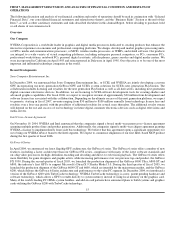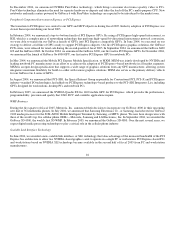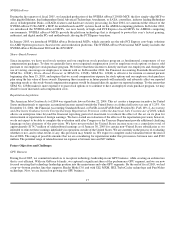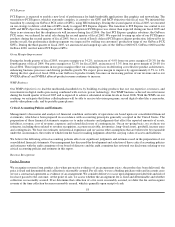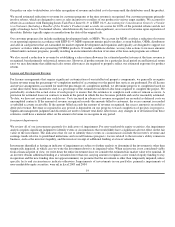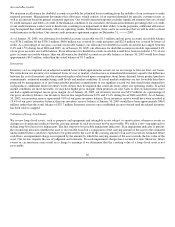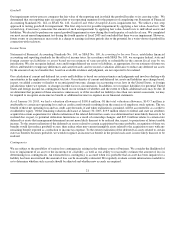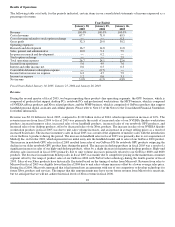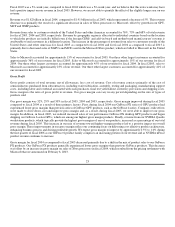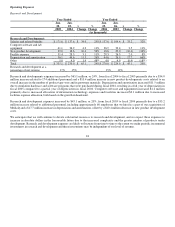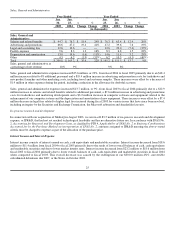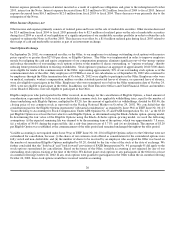NVIDIA 2005 Annual Report Download - page 23
Download and view the complete annual report
Please find page 23 of the 2005 NVIDIA annual report below. You can navigate through the pages in the report by either clicking on the pages listed below, or by using the keyword search tool below to find specific information within the annual report.
NVIDIA nForce
During the first quarter of fiscal 2005, we launched production of the NVIDIA nForce3 250Gb MCP, the first single−chip MCP to
offer gigabit Ethernet, dual independent Serial Advanced Technology Attachment, or SATA, controllers, industry leading Redundant
Array of Independent Disks, or RAID, features and hardware security processing. In June 2004, we announced the release of the
NVIDIA nForce3 Ultra MCP, a MCP for motherboards and PC systems based on the AMD64 computing platform. In October 2004,
we introduced the NVIDIA nForce4 MCPs, our new family of high−end PCI Express−based MCPs for AMD64 computing
environments. NVIDIA nForce4 MCPs provide the platform technology that is designed to power this year's fastest gaming,
enthusiast, and digital media PCs and motherboards, driving the PCI Express transition.
In January 2005, we introduced NVIDIA nForce Professional MCPs, which currently are the only PCI Express core−logic solutions
for AMD Opteron processor−based server and workstation platforms. The NVIDIA nForce Professional MCP family includes the
NVIDIA nForce Professional 2200 and the 2050 MCP.
Share−Based Payment
Since inception, we have used stock options and our employee stock purchase program as fundamental components of our
compensation packages. To date we generally have not recognized compensation cost for employee stock options or shares sold
pursuant to our employee stock purchase program. We believe that these incentives directly motivate our employees and, through the
use of vesting, encourage our employees to remain with us. In December 2004, the Financial Accounting Standards Board issued
SFAS No. 123(R), Share−Based Payment, or SFAS No. 123(R). SFAS No. 123(R) is effective for interim or annual periods
beginning after June 15, 2005, and requires that we record compensation expense for stock options and our employee stock purchase
plan using the fair value of those awards. Expensing these incentives in future periods will materially and adversely affect our reported
operating results as the stock−based compensation expense would be charged directly against our reported earnings. To the extent that
SFAS No. 123(R) makes it more expensive to grant stock options or to continue to have an employee stock purchase program, we may
decide to incur increased cash compensation costs.
Repatriation Legislation
The American Jobs Creation Act of 2004 was signed into law on October 22, 2004. This act creates a temporary incentive for United
States multinationals to repatriate accumulated income earned outside the United States at a federal effective tax rate of 5.25%. On
December 21, 2004, the Financial Accounting Standards Board, or FASB, issued FASB Staff Position No. FAS 109−2, Accounting
and Disclosure Guidance for the Foreign Earnings Repatriation Provision within the American Jobs Creation Act of 2004, which
allows an enterprise time beyond the financial reporting period of enactment to evaluate the effect of the act on its plan for
reinvestment or repatriation of foreign earnings. We have started an evaluation of the effects of the repatriation provision; however,
we do not expect to be able to complete this evaluation until after Congress or the Treasury Department provide additional clarifying
language on key elements of the provision. We have not provided for United States income taxes on a cumulative total of
approximately $174.7 million of undistributed earnings as of January 30, 2005 for certain non−United States subsidiaries as we
intended to reinvest these earnings indefinitely in operations outside of the United States. We are currently in the process of evaluating
whether or not, and to what extent, if any, this provision may benefit us. We expect to complete such evaluation before the end of
fiscal 2006. The range of possible amounts that we are considering for repatriation under this provision is between zero and $500
million. The potential range of related income tax expense is between zero and $27 million.
Future Objectives and Challenges
GPU Business
During fiscal 2005, we committed ourselves to recapture technology leadership in our GPU business, while creating an architecture
that is cost efficient. With our GeForce 6 family, we captured a significant share of the performance GPU segment, and we are now
focused on using that technology leadership position into the mainstream and value GPU segments. By the end of fiscal 2005, we had
a top−to−bottom product line that supports Shader Model 3.0 and with SLI, MXM, HSI, TurboCache technology and PureVideo
technology. Now, we are focused on growing our GPU business.
17


